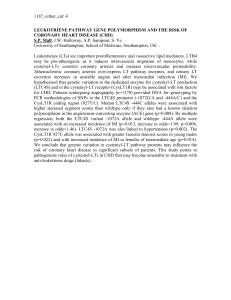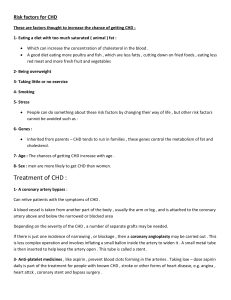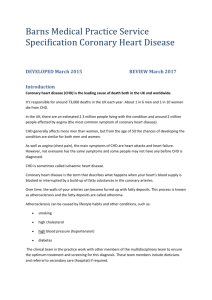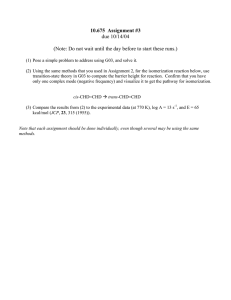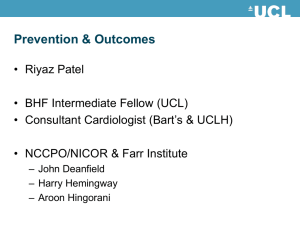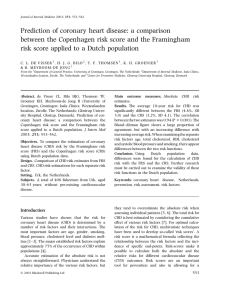Emberson J R. Re-assessing the role of major coronary risk... imprecision and changes over time.
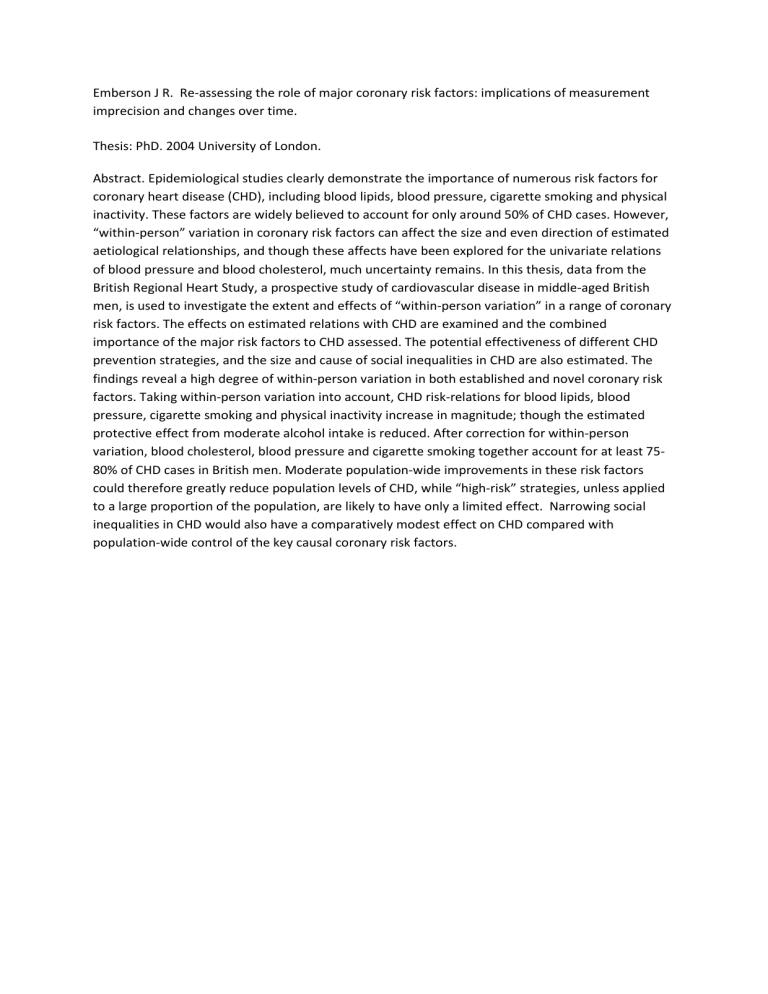
Emberson J R. Re-assessing the role of major coronary risk factors: implications of measurement imprecision and changes over time.
Thesis: PhD. 2004 University of London.
Abstract. Epidemiological studies clearly demonstrate the importance of numerous risk factors for coronary heart disease (CHD), including blood lipids, blood pressure, cigarette smoking and physical inactivity. These factors are widely believed to account for only around 50% of CHD cases. However,
“within-person” variation in coronary risk factors can affect the size and even direction of estimated aetiological relationships, and though these affects have been explored for the univariate relations of blood pressure and blood cholesterol, much uncertainty remains. In this thesis, data from the
British Regional Heart Study, a prospective study of cardiovascular disease in middle-aged British men, is used to investigate the extent and effects of “within-person variation” in a range of coronary risk factors. The effects on estimated relations with CHD are examined and the combined importance of the major risk factors to CHD assessed. The potential effectiveness of different CHD prevention strategies, and the size and cause of social inequalities in CHD are also estimated. The findings reveal a high degree of within-person variation in both established and novel coronary risk factors. Taking within-person variation into account, CHD risk-relations for blood lipids, blood pressure, cigarette smoking and physical inactivity increase in magnitude; though the estimated protective effect from moderate alcohol intake is reduced. After correction for within-person variation, blood cholesterol, blood pressure and cigarette smoking together account for at least 75-
80% of CHD cases in British men. Moderate population-wide improvements in these risk factors could therefore greatly reduce population levels of CHD, while “high-risk” strategies, unless applied to a large proportion of the population, are likely to have only a limited effect. Narrowing social inequalities in CHD would also have a comparatively modest effect on CHD compared with population-wide control of the key causal coronary risk factors.
